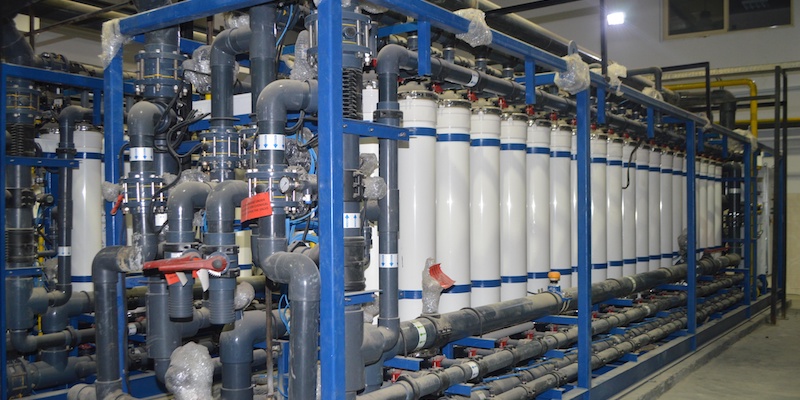Seawater Treatment Yields Process Water for Power Plant
Ultrafiltration prepares low-quality seawater for reverse osmosis desalination

The Ataqa Power Plant in Egypt draws its feed water from the Red Sea.
A power plant in Egypt needed to use seawater from the nearby Red Sea as feed water for its plant processes. This case study shows how Fluence designed and built a new seawater demineralization plant that includes an ultrafiltration pretreatment, reverse osmosis, and mixed bed ion exchange.
Background
When the Egyptian Ministry of Electricity decided to increase the country's power generation capacity, the Ataqa Power plant on the Red Sea was slated for expansion. The goal was to build a new, state-of-the-art water demineralization plant that would use feed water from the Red Sea to produce ultrapure water for steam generation and other plant processes. The general contractor in charge of the new plant chose Fluence to design, supply, and commission the plant.
Challenges
The project posed several challenges. First, the Ministry of Electricity issued a very tight schedule to complete the construction. Second, the raw seawater was of very low quality, with high levels of contaminants and total dissolved solids (TDS) levels often as high as 42,000 ppm.
Solutions
The Fluence design team decided to implement three independent, fully-automated trains with a redundant control system. An ultrafiltration pretreatment step was selected to remove contaminants before the reverse osmosis stage.
Fluence's project team also created an aggressive schedule with specific deadlines for each task and installation. As a result, the company was able to deliver the first train in four months, and the next two trains only two months later.
The final seawater plant consists of the following components:
- Seawater pretreatment using disc filtration and ultrafiltration (UF) with a capacity of 10,800 m3/d
- Three independent systems for first-pass seawater reverse osmosis (SWRO) with a capacity of 1,500 m3/d each
- Three second-pass brackish water reverse osmosis (BWRO) systems with a capacity of 1,200 m3/d each
- Three multiple mixed bed (MB) regeneration systems with a capacity of 1,200 m3/d each
- Water neutralization system
Results
The Ataqa power plant was able to start using its new seawater demineralization plant on schedule. With two independent trains running at all times and one on standby, the plant can generate demineralized water at the requested rate (3x1,200 m3/d).
Seawater Demineralization for Industrial Use
If you'd like to learn more about Fluence’s ultrapure water and desalination treatment solutions, please contact our experts to discuss your next project.
PROJECT DETAILS
LOCATION
Ataqa, Egypt
CUSTOMER
Ataqa Power plant
SOLUTION
Seawater Demineralization Plant
TECHNOLOGIES
Ultrafiltration, Seawater Reverse Osmosis Desalination, Brackish Water Reverse Osmosis Desalination, Mixed Bed Deionization
